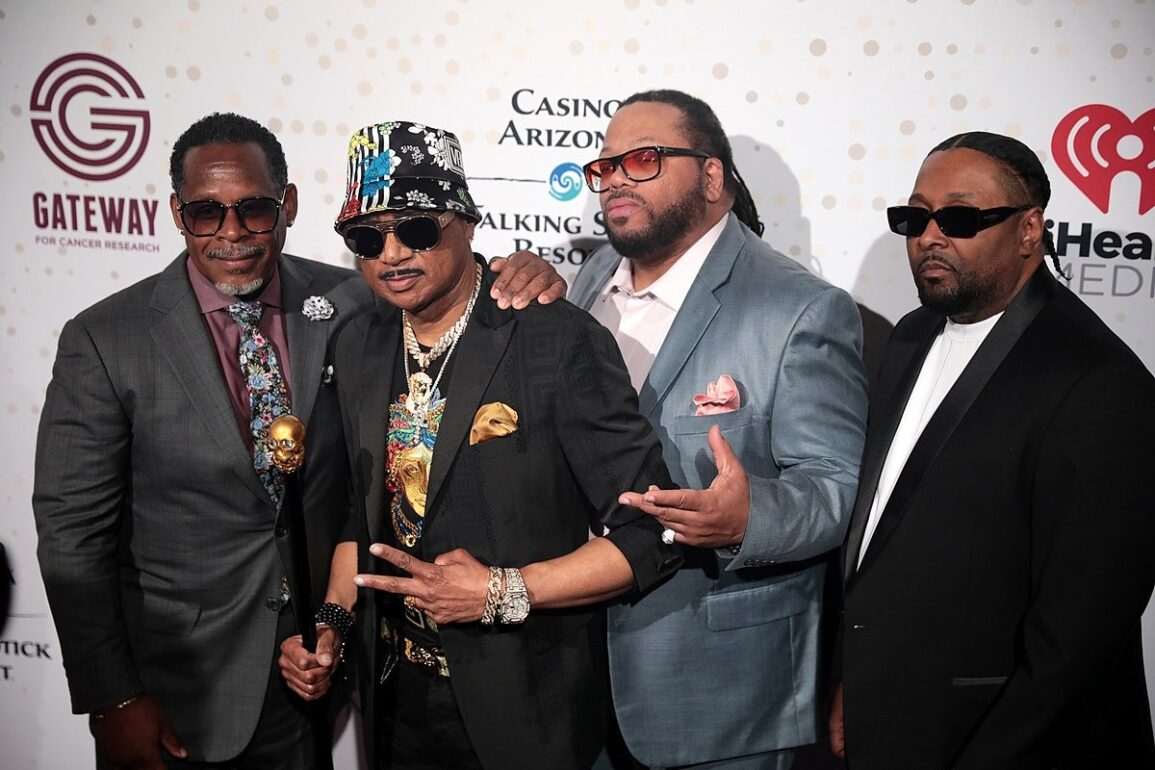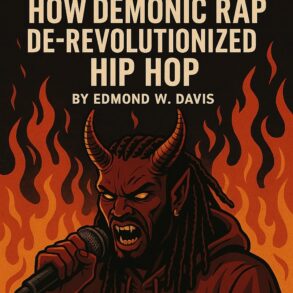The Sugarhill Gang, formed in Englewood, New Jersey, in the late 1970s, is widely regarded as one of the pioneering groups in the development of hip hop music. Comprised of Michael “Wonder Mike” Wright, Henry “Big Bank Hank” Jackson, and Guy “Master Gee” O’Brien, the trio gained fame with their groundbreaking single “Rapper’s Delight,” released in 1979.
“Rapper’s Delight” was a game-changer in the music industry, becoming one of the first rap songs to achieve mainstream success and reaching the top 40 charts in several countries. With its catchy beat, infectious rhymes, and lively party atmosphere, the song introduced hip hop to a global audience and laid the foundation for the genre’s future growth and popularity.
The Sugarhill Gang’s impact on hip hop culture extends far beyond “Rapper’s Delight.” They continued to release albums and singles throughout the 1980s, contributing to the genre’s evolution and helping to establish rap as a legitimate and respected form of artistic expression. Today, the Sugarhill Gang remains a seminal group in the history of hip hop, revered for their pioneering contributions to the genre and their enduring influence on subsequent generations of artists.
1. Get on Up
“Get on Up” is a funk-infused anthem by The Esquires, a soul group formed in Milwaukee, Wisconsin, in the 1950s. Released in 1967, the song became one of their most enduring hits, showcasing their energetic performance style and tight musical arrangements.
The track’s infectious rhythm, punctuated by a lively horn section and a driving beat, immediately grabs listeners’ attention and compels them to move. Its catchy chorus, urging listeners to “get on up,” adds to the song’s irresistible energy, making it a favorite on dance floors and radio airwaves alike.
Lyrically, “Get on Up” is a call to action, encouraging people to let loose and embrace the joy of dancing. The Esquires’ soulful vocals convey a sense of exuberance and celebration, creating a party atmosphere that is impossible to resist.
“Get on Up” remains a classic in the realm of soul and funk music, cherished for its infectious groove, dynamic performance, and timeless appeal. Its influence can be heard in the work of countless artists who have followed in The Esquires’ footsteps, making it a cherished favorite among fans of vintage soul and funk.
2. 8th Wonder
“8th Wonder” is a song by the American hip hop group, The Sugarhill Gang. Released in 1980, it’s one of their most well-known tracks and played a significant role in the popularization of hip hop music. The song is from their album “8th Wonder” and was produced by Sylvia Robinson, who co-founded Sugar Hill Records.
The track is characterized by its catchy beat, funky bassline, and playful rhymes. In “8th Wonder,” The Sugarhill Gang showcases their signature style of party-oriented rhymes and boasts about their skills as MCs. The lyrics celebrate the group’s success and prowess in the world of hip hop, likening their abilities to being the “8th wonder” of the world.
“8th Wonder” was a commercial success, reaching the top 20 on the Billboard Hot 100 chart and solidifying The Sugarhill Gang’s status as pioneers of hip hop music. The song’s infectious groove and energetic delivery made it a favorite in clubs and parties, and it continues to be a classic in the hip hop genre.
With its catchy beat and memorable lyrics, “8th Wonder” remains a standout track in The Sugarhill Gang’s discography and a timeless anthem in the history of hip hop music.
3. 7′ Single Version
The term “7′ Single Version” refers to a specific format of music release, typically a vinyl record, where a single song is featured on both sides of the record. In this context, the song would be the focus of the release, and there would typically be no additional tracks included.
7-inch vinyl singles were a popular format for releasing music, especially during the mid to late 20th century. They were widely used for commercial singles, promotional releases, and jukebox selections. The smaller size of the record allowed for a single song to be played at 45 revolutions per minute (rpm), with the song typically lasting around 2 to 4 minutes on each side.
The “7′ Single Version” designation often indicates that the song is the standard radio edit or album version, rather than an extended or remixed version. This version would typically be the same as what is heard on the corresponding album or released to radio stations for airplay.
Overall, the “7′ Single Version” format played a significant role in the distribution and promotion of music, particularly during the vinyl era, and remains a nostalgic and collectible format for music enthusiasts.
4. Kick It Live From 9 to 5
“Kick It Live From 9 to 5” is a dynamic and energetic hip-hop track by the Sugarhill Gang, released in 1988. The song showcases the group’s signature style of rap, characterized by catchy rhymes, funky beats, and infectious energy.
With its upbeat tempo and lively instrumentation, “Kick It Live From 9 to 5” invites listeners to groove along from start to finish. The Sugarhill Gang’s smooth flow and clever wordplay keep the momentum going, creating a party atmosphere that’s impossible to resist.
Lyrically, the song captures the essence of a day in the life of a working individual, with the group rapping about the hustle and bustle of the daily grind. From commuting to the office to clocking in and out, the lyrics paint a vivid picture of the challenges and triumphs of the nine-to-five grind.
“Kick It Live From 9 to 5” is a testament to the Sugarhill Gang’s enduring influence on hip-hop music. With its infectious groove and relatable lyrics, the song remains a favorite among fans of old-school rap and continues to be celebrated for its contribution to the genre’s rich history.
5. Funk Box
“Funk Box” typically refers to a musical device or piece of equipment used by musicians, particularly in the funk genre, to create and manipulate rhythmic patterns and beats.
In the context of funk music, which is known for its syncopated rhythms and grooves, a “funk box” could refer to a drum machine or a rhythm generator that produces electronic percussion sounds. These devices allow musicians to program and sequence drum patterns, basslines, and other rhythmic elements, providing a foundation for funk compositions.
The use of drum machines and rhythm generators became prevalent in funk music during the late 1970s and 1980s, as advancements in technology made these devices more accessible and affordable. Funk bands and producers embraced these tools to create tight, danceable grooves and to experiment with new sounds and textures.
In addition to electronic devices, “funk box” can also refer to a style of drumming or percussion playing characterized by a tight, rhythmic approach and an emphasis on syncopation and groove. Funk drummers often utilize techniques such as ghost notes, syncopated rhythms, and dynamic accents to create a funky feel.
Overall, whether referring to a musical device or a style of playing, the term “funk box” embodies the rhythmic essence and groove-oriented approach that defines funk music.
6. Rapper’s Delight
“Rapper’s Delight” is a groundbreaking hip-hop track by the Sugarhill Gang, released in 1979. Considered one of the pioneering songs of the genre, it played a significant role in introducing hip-hop to mainstream audiences worldwide. The track’s infectious beat, catchy lyrics, and innovative rhymes revolutionized the music industry and paved the way for the global hip-hop movement.
Clocking in at over 14 minutes in its full version, “Rapper’s Delight” features the group’s members—Wonder Mike, Big Bank Hank, and Master Gee—delivering an array of clever and humorous verses over a funky bassline sampled from Chic’s “Good Times.” The song’s energetic and playful style captivated listeners and quickly became a sensation.
“Rapper’s Delight” broke new ground by showcasing rap as a legitimate form of musical expression and entertainment. Its success opened doors for other hip-hop artists and laid the foundation for the genre’s exponential growth in the following decades.
Decades after its release, “Rapper’s Delight” remains an iconic and timeless classic, revered for its cultural significance and enduring popularity. It continues to be celebrated as a landmark achievement in music history and is widely regarded as one of the greatest rap songs of all time.
7. Apache (Jump On It)
“Apache (Jump On It)” is an iconic hip-hop track by The Sugarhill Gang, released in 1981 as part of their album “Jump on It!” The song is built around a prominent sample of the instrumental track “Apache” by the Incredible Bongo Band, which features a distinctive drum break and guitar riff.
With its infectious beat and catchy hook, “Apache (Jump On It)” quickly became a favorite among hip-hop enthusiasts and partygoers alike. The song’s upbeat tempo and energetic flow inspire listeners to dance and have a good time, making it a staple at clubs, parties, and sporting events.
Lyrically, “Apache (Jump On It)” is a celebration of dance and self-expression. The Sugarhill Gang’s smooth rhymes and playful delivery add to the song’s feel-good vibe, encouraging listeners to let loose and enjoy themselves on the dance floor.
“Apache (Jump On It)” has since become a classic in the hip-hop genre, beloved for its infectious groove and timeless appeal. Its influence can be heard in countless remixes, covers, and references across popular culture, cementing its status as a beloved favorite among fans of old-school hip-hop.
8. Funk You Up
“Funk You Up” is a song by The Sequence, an American hip hop trio consisting of Angie Stone, Cheryl Cook, and Gwendolyn Chisolm. Released in 1979, it is considered one of the pioneering tracks in the early days of hip hop and is recognized as one of the first rap songs to gain mainstream attention.
The song is characterized by its catchy beat, funky bassline, and rhythmic vocal delivery. In “Funk You Up,” The Sequence delivers playful and boastful lyrics, celebrating their skills as MCs and their ability to get the crowd dancing. The song’s infectious groove and catchy chorus made it a hit on the dance floors and helped introduce hip hop music to a wider audience.
“Funk You Up” is also notable for its historical significance in hip hop culture. It was one of the first rap songs to be released on a major label (Sugar Hill Records) and helped pave the way for future hip hop artists and groups. The Sequence’s success with “Funk You Up” demonstrated the commercial viability of hip hop music and laid the groundwork for the genre’s eventual explosion in popularity.
Overall, “Funk You Up” remains a classic in the history of hip hop, celebrated for its catchy melody, infectious rhythm, and pioneering role in the development of the genre.
9. White Lines (Don’t Don’t Do It)
“White Lines (Don’t Don’t Do It)” is a seminal track by Grandmaster Flash and Melle Mel, released in 1983. This influential song is not only celebrated for its catchy beat and memorable lyrics but also for its powerful social commentary on the dangers of drug addiction and substance abuse.
With its infectious bassline and rhythmic groove, “White Lines” became an instant hit in the hip-hop and dance music scenes. The song’s compelling beat, coupled with Melle Mel’s commanding vocals, captivated listeners and propelled it to the top of the charts.
Lyrically, “White Lines” addresses the devastating effects of cocaine and drug addiction on individuals and communities. The lyrics implore listeners to avoid the allure of drugs and the destructive consequences that come with addiction. The iconic refrain “Don’t don’t do it” serves as a powerful reminder of the importance of making positive choices and avoiding harmful substances.
“White Lines (Don’t Don’t Do It)” remains a timeless anthem against drug abuse, revered for its infectious rhythm and socially conscious message. Its impact on popular culture extends far beyond its initial release, inspiring generations of artists and activists to address issues of substance abuse and addiction through music and advocacy.
10. The Message
“The Message” is a seminal hip-hop track by Grandmaster Flash and the Furious Five, released in 1982. Renowned for its gritty realism and social commentary, the song stands as a powerful reflection of urban life in the early 1980s, addressing issues such as poverty, crime, and systemic inequality.
With its iconic beat and evocative lyrics, “The Message” paints a vivid picture of life in the inner city, capturing the struggles and hardships faced by marginalized communities. The song’s raw honesty and unflinching portrayal of urban decay struck a chord with audiences, earning it widespread acclaim and commercial success.
Lyrically, “The Message” delves into themes of economic hardship, social injustice, and the relentless cycle of violence that plagues many urban neighborhoods. Through vivid imagery and stark storytelling, the song offers a glimpse into the harsh realities of life on the streets, shedding light on issues that were often overlooked in mainstream media.
“The Message” is celebrated not only for its groundbreaking lyricism but also for its innovative production techniques. The song’s use of samples, scratches, and electronic beats helped to define the sound of early hip-hop and paved the way for future generations of artists.
Decades after its release, “The Message” remains a landmark achievement in hip-hop music, revered for its cultural significance and enduring impact. It continues to inspire artists and activists alike, serving as a powerful reminder of the importance of using music as a platform for social change.
This post was originally published on this site be sure to check out more of their content.








